Dulan, a small coastal village located on the east side of Taiwan, is a welcome break from the smog filled cities of the west, and provides a sanctuary from the fast pace of city life. It is 20km north of Taitung and home to surfers, artists, travellers, old timers and the Ami, Taiwan’s largest indigenous community. It’s an eclectic scene and a great place to spend time.
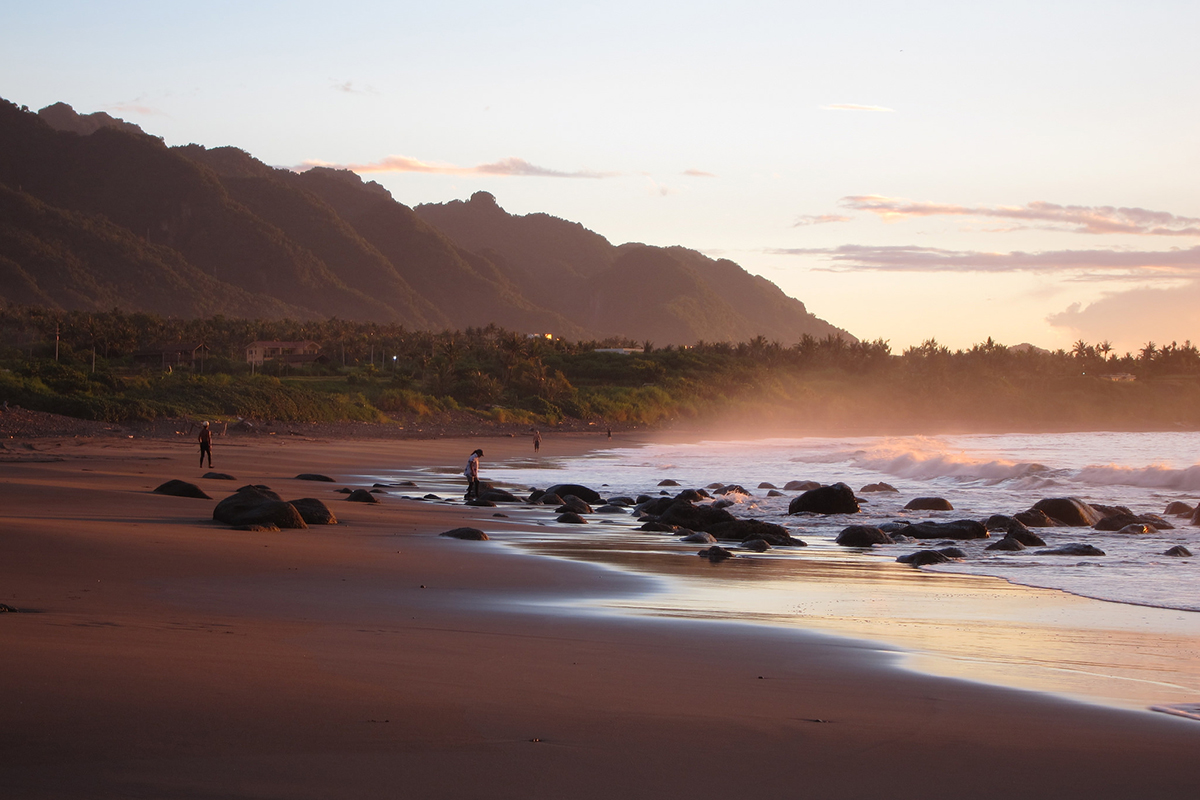
Dulan beach (Photo: Ken Marshall via Flickr)
Dulan village is one of Taiwan’s most important artist communities and is a great place to get acquainted with work by some of the local makers. There’s a strong community of movers and shakers who made their base in the old Sugar Cane Factory in 1990s, when the owner shut up the sugar production shop after eight decades and invited the artists in. It’s a huge building that sits at the end of the high street where there are often open studios and the opportunity to look around the main gallery which exhibits the work of the residents. From traditional woodwork and sculpture to photography and murals; there is a plethora of artists practicing different disciplines here and more often than not they will be milling around and open to conversation if you’re curious to learn more.
If visiting at the weekend check out the factory gig on Saturday night where local bands, comedians and dancers come out to play. There is also a local brewery which serves drinks to thirsty crowds and artisans come out to sell their wares to visitors. It’s a melting pot of cultures coming together to celebrate creativity with humour, movement, sound and colour.
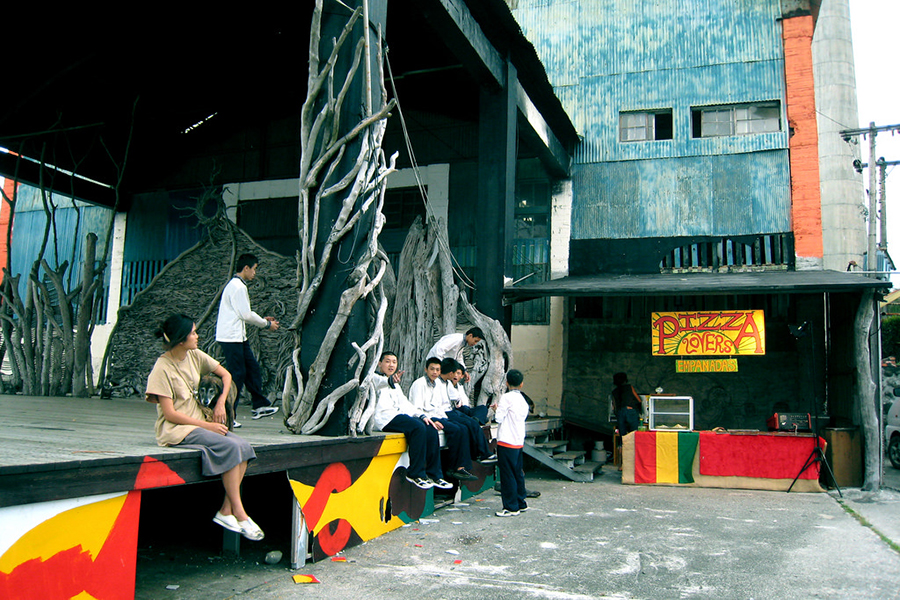
At the sugar cane factory (Photo: nobody! via Flickr)
A beach lies just half a kilometre from the village so if surfing is how you get acquainted with the natural space of a place then Dulan has the waves you need. Not only this but there is a cosy community of surfers and ocean enthusiasts who often organize beach cleans and meetings geared towards protecting the sea which are open to all. Getting involved is also a great way to meet locals and have some fun as the beach cleans always involve music and dancing to keep momentum flowing.
If you happen to be in town during an Amis celebration, this is an absolute must. The harvest festival is especially colourful. It is a day of music in abundance, wild costumes and dancing amongst all the generations. It’s usually open to all and will fill any soul with joy at the potential for human connection in celebration. Just make sure not to go inside whilst the dancing is happening as this will interrupt the ritual, and don’t block the view with a big camera. Otherwise you’ll be welcomed warmly and invited to any number of stalls where you can create traditional style jewellery from scrap material or make pompoms like those featured on the traditional costumes.
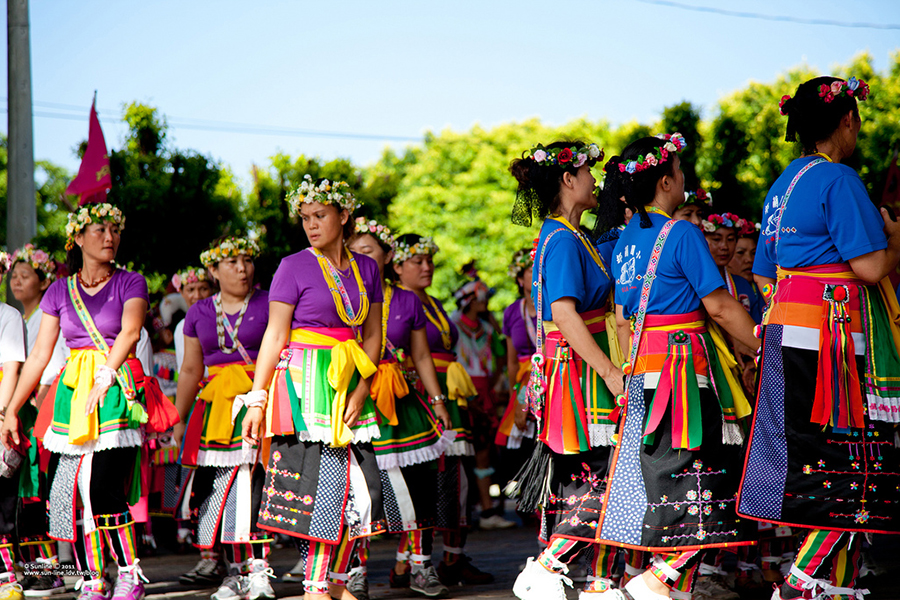
Amis celebration (Photo: Sunline Liu via Flickr)
Dulan also provides a strong base for those who want to stay in the area for longer, explore different parts of the coast by bike, car or foot, or meander inland to the smaller towns and villages where much of Taiwanese life bubbles away.
Accommodation
The village itself is small enough for everybody to know everybody and visitors are welcomed in as villagers by many. It’s easy to find a home away from home within a mere few hours in one of these cosy inns.
Surfers should head to Wagaligong Hostel and Bar (哇軋力共, Highway 11, #89) where there are beds and boards to be found. The bedrooms have recently been renovated so are clean, comfy and cosy. Wagaligong call themselves an ‘ocean academy’ where many different water sports can be learnt and practiced. They rent paddle boards and take wind surfing classes out to sea. This place has a familiar hostel vibe and is a welcoming home for everyone, even those only passing through for a coffee. The owners are super chatty, always wanting to engage about the local area and inform visitors about ways in which they can be involved.
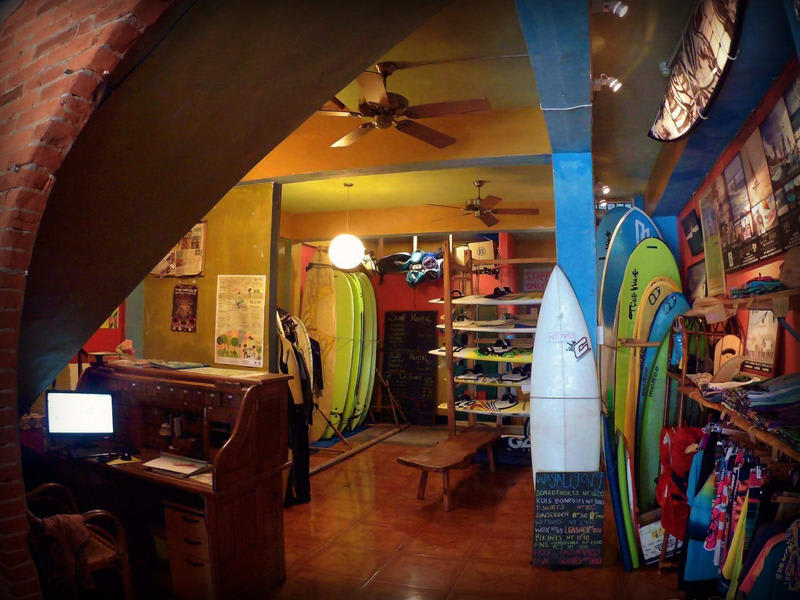
Wagaligong Hostel and Bar (Photo: Wagaligong Hostel)
The beautiful Taitung Sea Art Hostel (Mother Land 71, Neighborhood 13, Lane Village, Taitung) is owned by Emily who is Taiwanese, and Roman, a Canadian. The place has had love poured into it since day one. It is surrounded by tall trees, wild flowers and jungle plants and their outdoor pavilion is a good spot to check out the clear skies whilst away from smoggy cities. The food cooked by Emily is delicious local cuisine and Roman is an expert on local Taiwanese craft. If you have questions they will have answers and if you want to get somewhere they have bikes for rent and free parking if you’ve got a vehicle. And, the piece de resistance, if you miss cooking whilst you’re away from home, there is an outdoor kitchen ready and waiting for anyone who wants to use it as well as a BBQ/fire pit for those who like their food slightly chargrilled.
The Travel Bug Bistro Inn (134 Dulan Village) works for those on a shoestring budget. It’s very simple accommodation with just a few mattresses on the floor in each room but is really comfortable and clean with big showers. Breakfast, tea, coffee and access to washing machines are all included. Plus there is a bar/bistro downstairs which is a great place to hang out in the heat of the day with other travellers and visiting artists and musicians. It’s run by a family who have relatives all over town who drop in throughout the day, sometimes lighting BBQs in the evening on the porch, which are open to everyone.
Bars and Restaurants
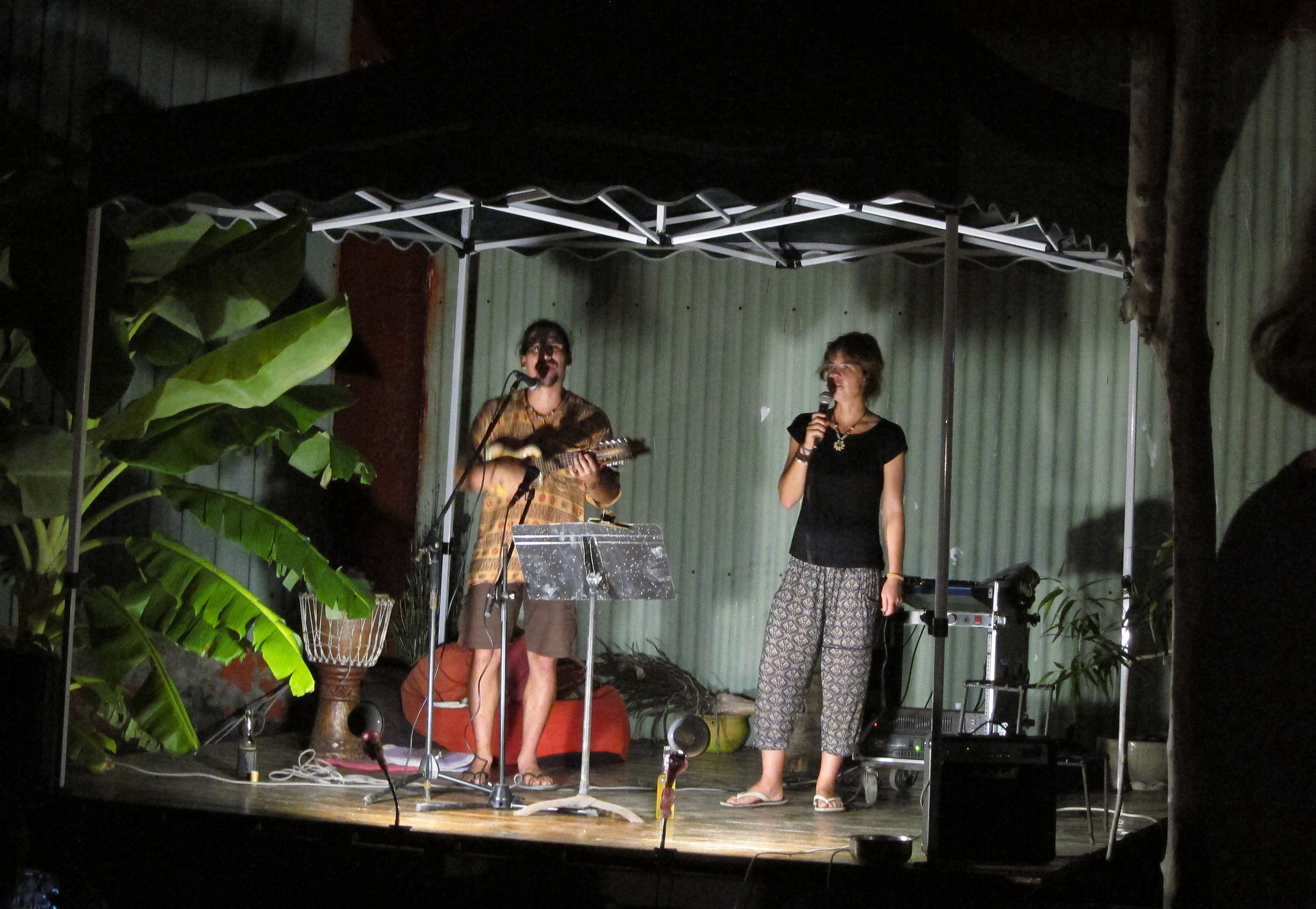
Gigs at the Sugar cane factory (Photo: Ken Marshall via Flickr)
There’s plenty of easy food to find on the streets of Dulan, one of the best places is a small kitchen just outside the Sugar Cane Factory (61 Dulan Village) where a wonderful lady serves quesadillas through a window. If you’re looking for a quick bite to eat this is a great place to start and will set you up for a day of perusing the galleries.
Dulan Indian Cuisine (431-2 Dulan Village) is situated just beyond where the main action is, but is definitely worth a trip for the ice cream, made by the owner who is a Bangalore native. Loyal to the cuisine, he cooks up authentic curries and perfectly flavoured rice for reasonable prices. It’s a great surprise to find this gem of flavours from elsewhere just outside the village.
For a sit-down dinner after a long day out, try Tian ma ma Kitchen (197 Dulan Village). This is a low-key, traditional style Taiwanese diner where the food is cooked fresh for each order. The owners speak English and there is also an English menu to make ordering less of a mystery tour. Recommended by locals are the beef skin slices as an appetizer and the beef fried rice as a main.
In the evenings Wagaligong is transformed into a bar and Italian restaurant serving home-made pizza and pasta to hungry surfers and travellers. Guests can eat in the restaurant or head to the roof terrace to relax and see the streets unfold into a twinkling night time It’s the place to go to if searching for home comforts but if you want to stick with local cuisine this should not be top of your list. Hot tip – arrive in early evening to avoid being disappointed by a sold out menu later on in the night.
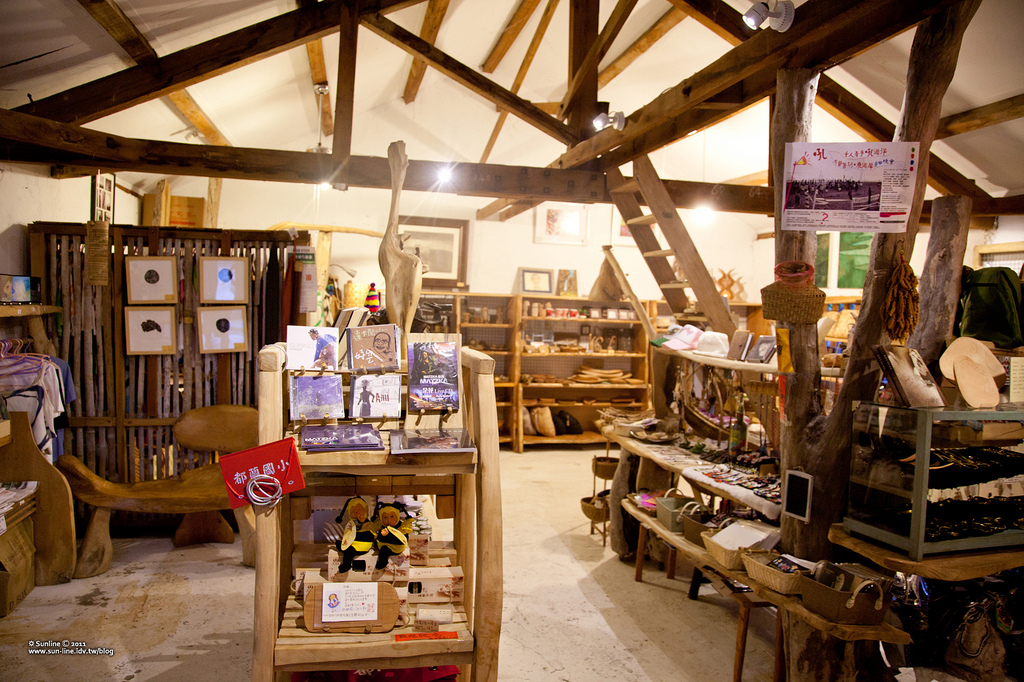
Makers market, Sugar cane factory (Photo: Sunline Liu via Flickr)
Beyond the Town
Dulan Mountain is the local people’s holy place. The Amis believe it is where their God lives and the Puyama claim it as the Holy Mountain. There is something undoubtedly enchanting about this feat of nature, lush with green and the only place where sapphire stones can be found in Taiwan; it is one of nature’s jewels. The trail starts at 600m above sea level and ascends to 1,190m. The walk is just under four kilometres and snakes along the coastline looking out to sea. It’s a perfect environment for butterflies. Almost four hundred different species of these creatures can be found in Taiwan, and many of them will join you on your ascent to the top of the mountain.
Dulan Archaeological Site is the best place to get acquainted with ancient culture of the area. A stone at the entrance explains the history of the Amis people, who were recorded to have lived in this part of the world for 3,500 years. It is thought that they originally lived in lowland areas but after a tsunami destroyed their entire village they were forced to move to higher parts of the coastline. Many megalithic artefacts were excavated in this area by Japanese archaeologist Torii Ryuzu in the 1920s and are now on display through a small park. They are thought to have been used for burial rites and rituals and other ceremonial purposes.
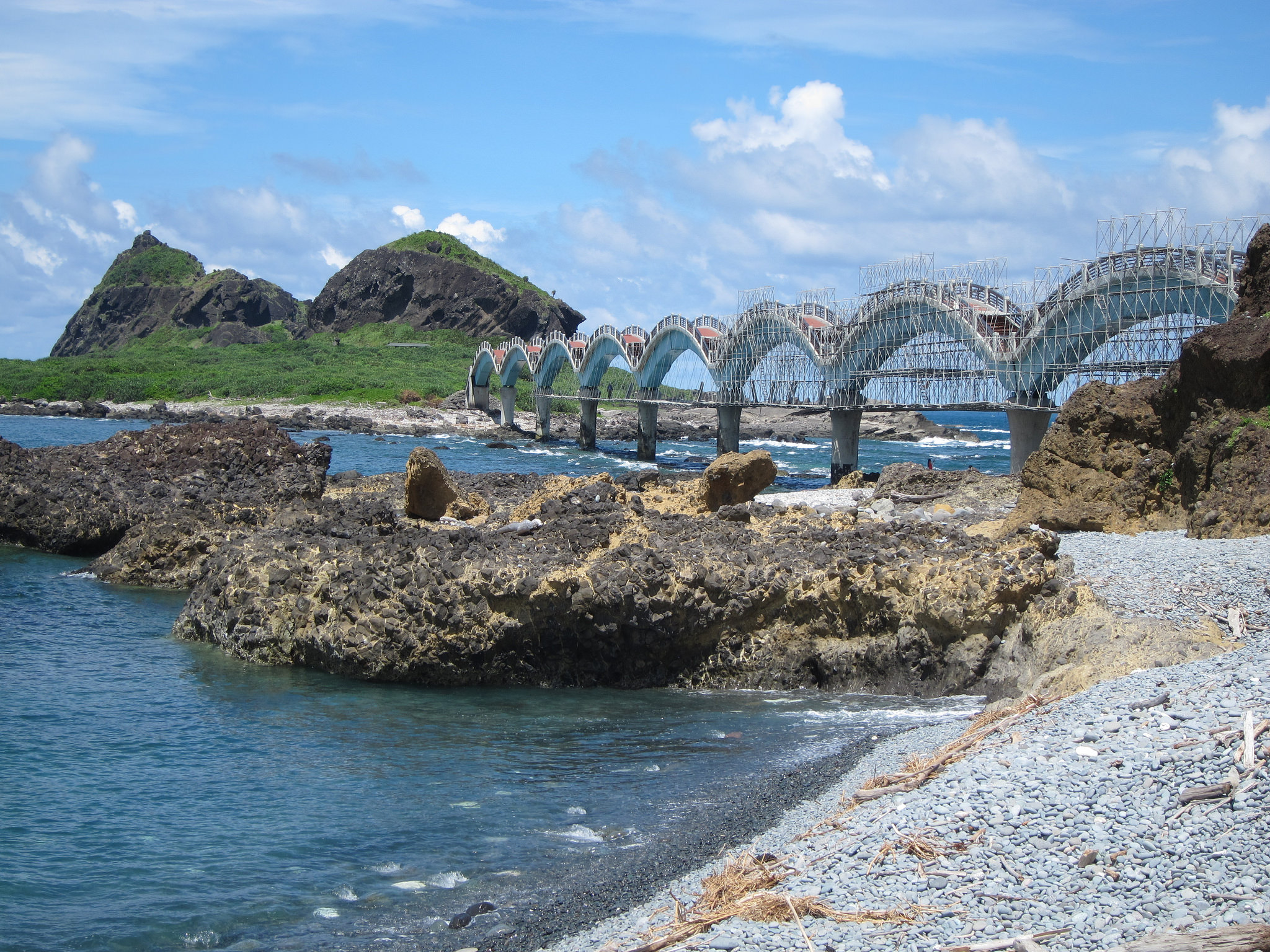
Sanxiantai (Photo: Ken Marshall via Flickr)
Sanxiantai is on the edge of a nearby township of Chenggong, an easy bus ride from Dulan and one of the most popular scenic spots along the east coast. The name translates to ‘Terrace of The Three Immortals’ and it’s easy to see why, as it’s a small island made of three huge rocks in the sea. There is a footbridge which connects the mainland to the island and the shallow waters around the raggedy edge of the rock are home to a citadel of sea life cruising through the coral. There are many different paths to explore around the rock, including caves, pools and rare vegetation which can only be found in this part of the coastline.